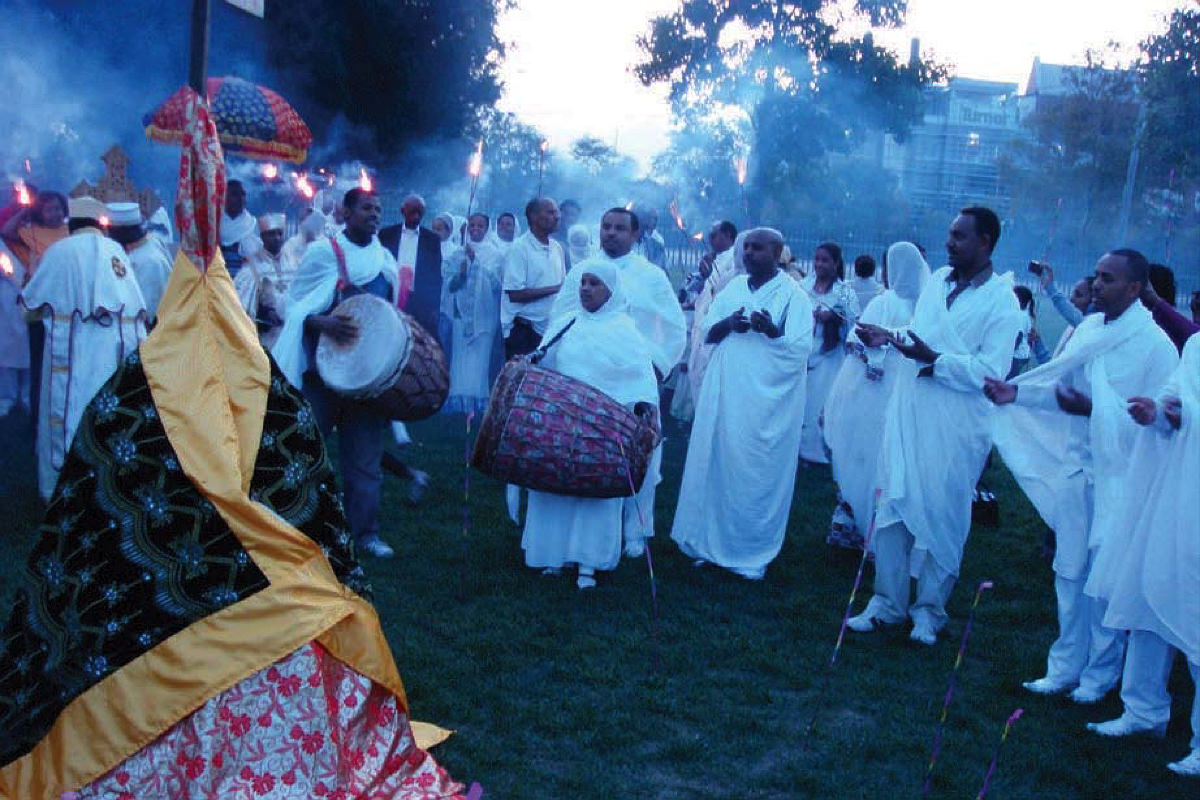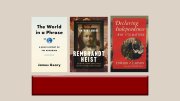Giuliano da Sangallo and the Ruins of Rome, by Cammy Brothers ’91, Ph.D. ’99 (Princeton, $75). The author, associate professor of architecture at Northeastern, returns to the subject of her dissertation: a Florentine architect (1443-1516) whose meticulous drawings of ancient Rome did much to shape the Renaissance perception of antiquity, and to inform his own building designs. A labor of love and of scholarship, it happily makes available exquisite renderings that resonate today, aesthetically and in terms of appreciating the past. Gorgeously printed and published.
The ICU Guide for Families, by Lara Goitein ’91, M.D. ’97 (Rowman & Littlefield, $34). COVID-19 unfortunately made millions aware of hospital intensive care units. An experienced critical-care physician offers practical, sympathetic guidance, proceeding from the understanding that “no one in the ICU suffers as much as the family members of patients” (not least because the latter are usually sedated and unable to advocate for themselves). She graciously attributes the quality of the prose to her mother, Dr. Marcia Angell, former editor-in-chief of The New England Journal of Medicine.
Farming for Our Future, by Peter H. Lehner ’80 and Nathan A. Rosenberg, (Environmental Law Institute, $24.95 paper). Lehner, head of Earthjustice’s sustainable food and farming program, and Rosenberg, a visiting scholar at the Law School’s Food Law and Policy Clinic, address the legal framework for climate-neutral agriculture. To the traditional fruits of farming—food, feed, fuel, and fiber—they add a fifth: the future. Given how policy has shaped agriculture, they explain the possible move toward “zero-emission production of plants and animals that can sequester carbon in soil and biomass.” Professionally oriented, but generally useful in suggesting how to make any major greenhouse-gas-emitting activity more sustainable.
Atoms and Ashes: A Global History of Nuclear Disasters, by Serhii Plokhy (W. W. Norton, $30). Having written vividly about Chernobyl and the Cuban missile crisis, the Hrushevs’kyi professor of Ukrainian history turns to the challenges of managing nuclear weapons and nuclear power generally, from radiation releases during a weapons test at Bikini Atoll to Three Mile Island and Fukushima. As the world explores alternatives to fossil fuels, he is wary of this one because “it is hard to be optimistic about a future free of nuclear accidents,” even with new technologies, as the power industry remains “vulnerable to repeating old mistakes in new…ways.”
The Religious Revolution: The Birth of Modern Spirituality, 1848-1898, by Dominic Green, A.M. ’07 (Farrar, Straus and Giroux, $35). For all the tumult accompanying the popular democratic revolutions, rise of industrial capitalism, and decline of institutional religion, Green argues, society did not secularize: “The age of scientific and technological discovery was also one of frantic religious creativity.” Among the results: the world’s largest democracies, the United States and India, “are the world’s most religious democracies,” and the Christian belief in reincarnation—a fringe, heretical notion two centuries ago—is widespread. A sweeping reintrepretation of spiritual life.
Rewired: Protecting Your Brain in the Digital Age, by Carl D. Marci, M.D. ’97 (Harvard, $27.95). Shaken by his observations of addiction to devices—“Healthy, young people were in physical and emotional distress, apparently owing to smartphone deprivation”—this assistant professor of psychiatry explores what happens when “we have been accustomed to thinking of our brains as computers” but the capacity and processing speed of the actual machines radically outpaces that of the brain itself. Changed behavior is not neutral, he argues: “[W]hen we change our behaviors, we change our brains.”
The Digital Mindset, by Paul Leonardi and Tsedal Neeley, Fitzhugh professor of business administration (Harvard Business Review Press, $30). Turning from Marci’s concerns, this book on “what it really takes to thrive in the age of data, algorithms, and AI” (the subtitle) concerns managers’ (and others’) needs for an appropriate degree of technical literacy to cope, short of becoming full-time coders or technocrats themselves.
Literature for a Changing Planet, by Martin Puchner, Wien professor of drama and of English and comparative literature (Princeton, $18.95). A small book making a large argument: that understanding climate change is not solely a scientific issue. “The challenges of scale, complexity, and agency are problems of narrative,” which can be ably addressed through the power of literature. More broadly, in Connecting Literature and Science (Routledge, $160), Jay A. Labinger, Ph.D. ’74, an organometallic chemist and administrator of Caltech’s Beckman Institute, examines how metaphor, analogy, and other common ways of thinking animate both broad realms of human intellection: hard work toward what the author deems a “connectionist approach,” drawn from his own reading and inquiries.
Dress Codes, by Véronique Hyland ’06 (Harper, $16.99 paper). The fashion features director of ELLE dives deep into fashion, in a way that may seem to the uninitiated more impenetrable than quantum mechanics, even with her guidance. But her core message couldn’t be simpler: “[F]ashion is a key—it unlocks questions of power, sexuality, and class, tapping into history and signaling the world around us. It means something. Even if you’re ‘just’ wearing jeans and a T-shirt.”
Dirt Road Revival, by Chloe Maxmin ’15 and Canyon Woodward ’15 (Beacon Press, $26.95). Two Divest Harvard activists tell how, since graduating, they have sustained their activism—Maxmin as a Maine state representative and now senator, Woodward as her campaign manager—in rural, red districts. A memoir and manual of progressive politicking, it is also “a tough-love letter to the Democratic Party,” which has emphatically lost its way around such precincts.
Sing and Sing On, by Kay Kaufman Shelemay, Watts professor of music and professor of African and African American Studies (University of Chicago, $35 paper). There are all sorts of migrations, and Shelemay is perhaps uniquely situated to document the forced disapora from the Horn of Africa following the 1974 Ethiopian revolution. Her focus is specialized—the musicians who fled to America, the culture they carried, and the communities they created. Her close documentation of the lives of these “sentinels,” as she calls them, “testify to the power of musicians’ agency through and beyond music-making to reshape the world around them.”

The diaspora, New Riverside Park, Cambridge: celebrating Masqal, the Festival of the True Cross
Photograph courtesy of Kay Kaufman Shelemay
Majority Minority, by Justin Gest ’04 (Oxford, $29.95). An associate professor of policy and government at George Mason explores demographic transitions, and the resulting political reactions, in the multiethnic democracies of the United States and Europe. Focusing on societal responses, rather than individual ones, he concludes, “The evidence I collect in this book” (and there is a lot of it, historical and contemporary) “shows that America’s contentious standoff is predictable but also preventable.”
Mona Passage, by Thomas Bardenwerper ’12, J.D.-M.P.P. ’22 (Syracuse, $29.95). A former Coast Guard officer, retired because of Type 1 diabetes, has mined his experience to craft one of Syracuse University Press’s Veterans Writing Award-winning fictions. His novel entwines a Coast Guard officer and a Cuban migrant in San Juan, and a high-risk plan to escape from Cuba with the help of a hired Dominican smuggler.
Competing in the New World of Work, by Keith Ferrazzi, M.B.A. ’92, Kian Gohar, M.B.A. ’05, and Noel Weyrich (Harvard Buisness Review Press, $30). Veteran coaches on business adaptability weigh in on the workplace after the pandemic. Injunctions like “Let’s never just go back to work. Let’s go forward” may not solve all the practical problems of hybrid offices, the great resignation, or what it takes to innovate—but what harm can they do? Leaned down a bit, a sentence like “Purpose is how all of radical adaptability’s high-return practices meet their ultimate expression and fulfillment” probably gets at the reason so many people are fed up with demeaning, dead-end jobs. So if the coronavirus induced some rethinking, bring it on.
The Way of the Wall Street Warrior, by Dave Liu, M.B.A. ’99, with Adam Snyder (Wiley, $28). For the upper echelon, at least in finance, a veteran investment banker cashes in on his experience to offer tips on how to “diligence your way to an interview,” manage “your all-important first email,” etc., aware all the while that “your first impression might be your last” so you are encouraged to “strut like a peacock.”









